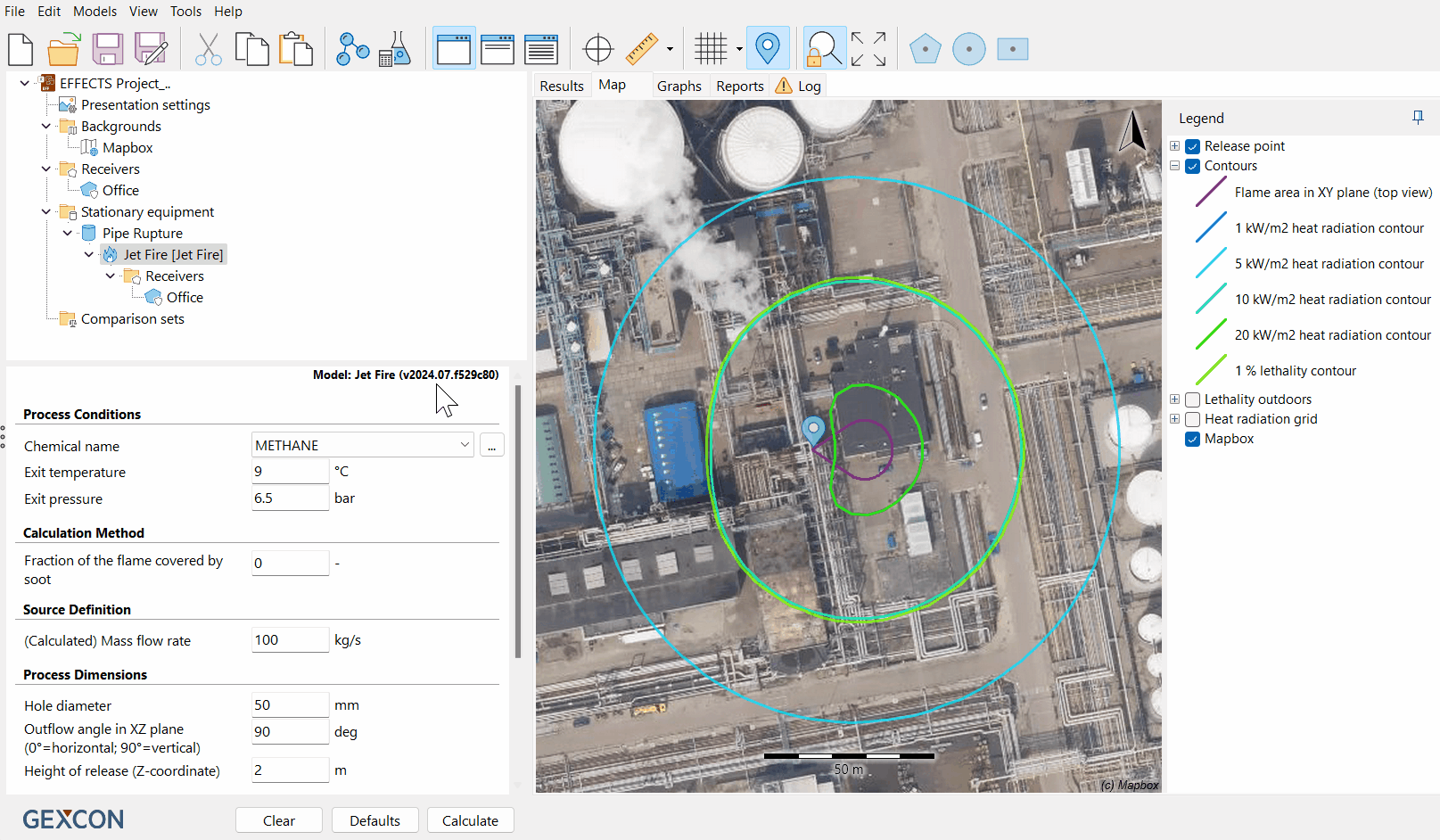- 19 Jul 2024
- 2 Minutes to read
How to define vulnerable areas
- Updated on 19 Jul 2024
- 2 Minutes to read
Defining vulnerable areas in EFFECTS is crucial for assessing potential impacts on sensitive locations like hospitals, apartment buildings, and offices. These areas can be evaluated for their vulnerability to hazards such as fire, toxic dispersion, and explosions. Follow the steps below to define a vulnerable area in EFFECTS.
Defining a vulnerable area
Navigate to the desired location
On your map, locate the area where you want to define your vulnerable area.
Add vulnerable area
Right-click on the "Receivers" node of the project tree.
Select "Add vulnerable area" from the context menu.
Populate required inputs
Click on the newly added vulnerable area node to your project tree.
Fill in the required inputs for the vulnerable area.
Define the shape of the vulnerable area
Click "Edit" for the "Shape of receiver" input.
Define the area by clicking on the map to outline the desired vulnerable area. The area will be highlighted in green as you click.
Once the area is outlined, click "Done" to finalise the shape.

Linking the vulnerable area to an end-model
Select the associated equipment
Navigate to the "Stationary Equipment" node in your project tree.
Select the equipment associated with the release point that you want to link to the vulnerable area.
Add receivers to the model
Right-click on the chosen model (which can be any end model for fire, explosion or dispersion calculation).
Select "Add receivers" from the context menu.
Click on the "Receivers" folder that has just been linked to the model.
The receiver(s) will be listed in the section below the project tree.
Select the vulnerable model you would like to evaluate, by clicking the box next to the defined vulnerable area.
Configure damage reporting
Choose the "Wind direction for damage".
The default option is "Worst case situation", which will force the model to choose whatever wind direction leads to the worst-case scenario (with the worst damage consequences).
The alternative option is "Defined by model" which will use the wind direction indicated as an input of the model the congestion area has been linked to.
Calculate results
Click "Calculate" to view the results.
By following these steps, you can effectively define and link a vulnerable area in EFFECTS, ensuring comprehensive assessments of potential hazards and their impacts on sensitive locations.
Interpreting the results
EFFECTS allows for efficient interpretation of the results by providing a clear visual representation of the impact on the vulnerable area as well as the specific data. Evaluation of the consequences of the selected model on the vulnerable area can be done by the following steps.
Select the vulnerable area: Click on the vulnerable area that is linked to the specific model in the project tree
Evaluating the contours: The map view will show the portion of the vulnerable area that has been directly impacted by the model, this is shown by the contours shown on the vulnerable area.
Evaluating the results: The results page will provide the consequence analysis results overview that the scenario had on the vulnerable area. The number of fatalities for the applicable and various maximum or peak results that are applicable to the scenario will be provided.


